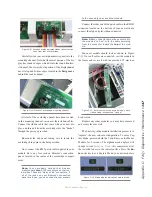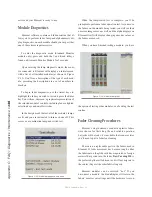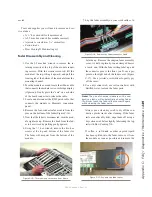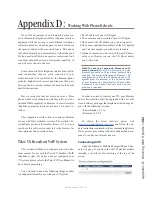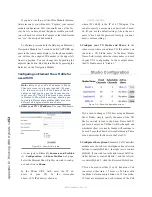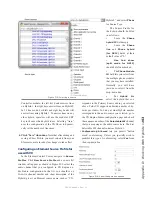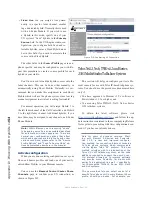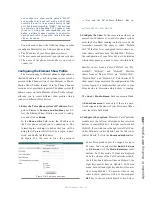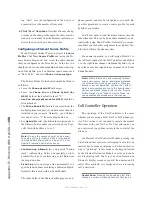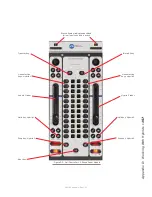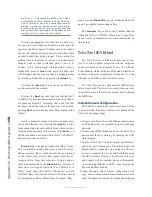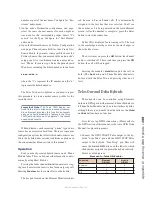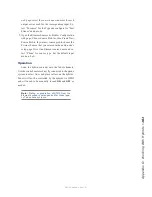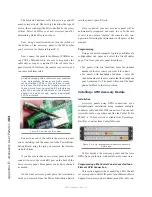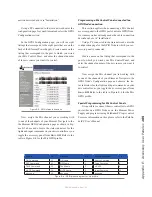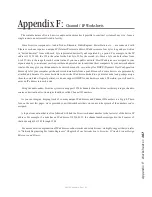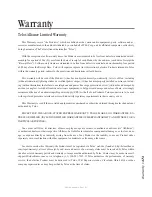
A
pp
en
di
x D
: W
or
ki
ng W
ith H
yb
ri
ds •
15
9
©2016 Axia Audio- Rev 1.8.1
number as part of the text name. Configure for “Fast
stream” audio mode.
5. On the node’s Destination configuration web page,
select the same channel number for each output as
was used for the corresponding input. Select “To
source” for the Type. Configure for “Fast Stream”
audio mode.
6. Open the Element Sources & Profiles Configuration
web page. Choose Source Profiles, then Create New
Source Profile. In your new source profile, choose the
Primary Source that you entered in the audio node’s
setup page. Give it an Element source name and se-
lect “Phone” for source type. Enter the phone hybrid
IP address, including the hybrid number, in the form
xx.xx.xx.xx,n
where the “x”s represent the IP number, and the “n”
represents the hybrid number.
The Telos Two has two hybrids, so you need to repeat
this procedure to create another source profile for the
second hybrid.
Important Note: The Telos TWO has an op-
tional internal mix-minus cross-connect feature.
Since Element provides this function automati-
cally, you should disable this feature in the Telos
TWO (set hybrid mode to “separate”) to prevent
unexpected results.
Within Element, each incoming “phone” type audio
source has an associated back-feed. There are some user
configuration options that affect which audio sources are
fed to the hybrid under various conditions, explained in
the mix-minus/back-feed section of this manual.
Operation
Load your newly-created hybrid source on a 4-Phone
Module fader. This can be done either manually or auto-
matically using Show Profiles.
Pressing the fader channel
On
button answers a ring-
ing-in call or selects an inactive line for an outgoing call.
Pressing
Preview
has the same effect on the hybrid.
The keypad located on the Element Monitor module
can be used to dial outbound calls. It is automatically
assigned to the last line that was selected. You’ll see
the number as it is being entered on the main Element
screen. After the number is complete, press the Enter
button to start the connection.
Caller ID is displayed for incoming calls. The icon
in the overbridge near the source text name changes to
show the line status.
The first time you press the
Off
button, the channel
audio is switched off. The second time you press the
Off
button, the call will be dropped.
Pressing the module’s
Hold
button puts the call on
hold. (The
Set
button on 4-Phone Module channels is
not used with the Telos Two, and pressing it has no ef-
fect.)
Telos One and Delta Hybrids
These hybrids can be controlled using Element’s
hardware GPIO ports. Either normal 4-Fader Modules or
4-Phone Fader Modules may be used with these hybrids,
although there is no benefit from the latter as the
Hold
and
Set
buttons have no function.
First, let’s set up GPIO connections. (Please refer to
the GPIO section of this manual, or the Axia GPIO Node
Manual, for pinout diagrams.)
1. Connect the GPIO START Pulse output to the hy-
brid’s “Line Take” pin, and the GPIO STOP Pulse
output to the hybrid’s “Line Drop” pin. This will
cause the
On
and
Off
buttons on the fader to which
the hybrid is assigned to operate the hybrid remotely.
Here’s a cable diagram:
Element-to-Telos ONE cable:
Function
Element
DB-15M
Hybrid
DB-9M
Common
7
6
On
4
1
Off
5
7



